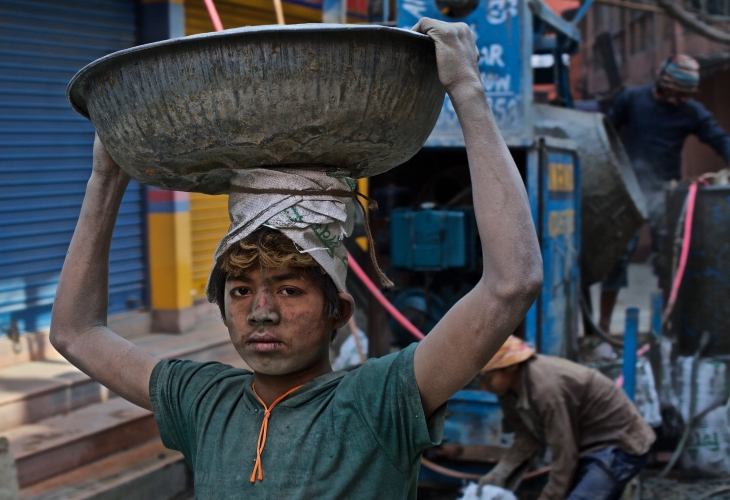Every 15 seconds, somewhere in the world, a worker is killed and another 150 are injured. A new international project has estimated that work-related accidents and illnesses account for 4% of the Global GDP. In the EU, this is EUR 476 billion every year. The cost of work-related cancers alone amounts to EUR 119.5 billion.
Work is full of challenges. Staying safe shouldn’t be one of them, so says the International Labour Organization (ILO) which is celebrating its 100th anniversary this year. Founded in 1919 in the aftermath of World War I, the ILO works to bring together governments, employers and workers to set international labor standards and promote decent work. In 1969, on its 50th anniversary, it was awarded the Nobel Peace Prize in recognition of its work. Yet, as you’ll read, there is still much work to be done in order to improve health and safety; the moral, economic and (in some territories) the legal imperatives to ‘do something’ continue to demand business owners’ and managers’ attention.
Do something: April 28, 2019
Launched in 2003, the seventeenth World Day for Safety and Health at Work takes place on Sunday, April 28, 2019. The Day was declared by the ILO to promote the prevention of occupational accidents and diseases globally. World Day for Safety and Health at Work is an awareness-raising campaign that is “intended to focus international attention on emerging trends in the field of occupational safety and health and on the magnitude of work-related injuries, diseases, and fatalities worldwide.”
The World Day for Safety and Health at Work will trigger a series of worldwide events and activities which will continue throughout the rest of the year around the theme of safety and health and the future of work. These will celebrate and build on the wealth of knowledge accumulated over 100 years, as well as preparing economies to face, appreciate and adapt to the changes brought forward by the challenges of future workplaces – major changes such as technology, demographics, work organization and climate change. To coincide with this, the ILO will launch a global report, sharing the story of a hundred years in saving lives and promoting safe and healthy working environments. April 28, 2019, is also International Workers’ Memorial Day, an annual event where workers and their representatives commemorate those killed, injured or made ill by their work and campaign for improved health and safety in workplaces. The Day is recognized by many governments across the world, with workers often wearing purple ‘forget-me-not’ ribbons. The numbers they are commemorating make for grim reading.
Accidents at Work
According to the International Labour Organization, every 15 seconds, a worker is killed at or by their work. Every day, that’s 6,300 people dying as a result of occupational accidents or work-related diseases – more than 2.3 million deaths per year. In addition, 317 million accidents occur while working every year – over 150 every 15 seconds. Across the world, the number of people dying from work-caused cancer adds to those dying because of work accidents.
It is estimated that at least 742,000 people die for this reason worldwide every year. Many of these incidents and exposures result in extended absences from work, disrupting processes, orders and profits. According to European Agency for Safety and Health at Work, the human cost of this ongoing adversity is vast and the economic burden upon organizations of poor occupational safety and health practices is estimated at 4% of global Gross Domestic Product each year.
World Day Against Child Labor
Six weeks after the World Day for Safety and Health at Work, on June 12, 2019, World Day Against Child Labor will join with the ILO campaign to improve the safety and health of young workers and put an end to child labor. This campaign aims to accelerate action to achieve the sustainable development goal of safe and secure working environments for all workers by 2030, and of ending all forms of child labor by 2025.

Most readers will likely find the numbers here quite shocking. The United Nations has identified 152 million children worldwide who must work so they and their families can survive. About half of them – 73 million children worldwide – perform hazardous work – toiling in mines and fields, exposed to pesticides and other toxic substances, carrying heavy loads or working long hours. Many suffer lifelong physical and psychological consequences. Engagement with either or both of these campaigns can provide your organization with new opportunities to energize (or re-energize) its workplace safety and health program. Here’s how:
Occupational Health and Safety
Occupational health and safety (OH&S) is a cross-disciplinary area concerned with protecting the safety, health and welfare of people engaged in work or employment. The goals of OH&S programs include creating a safe and healthy work environment. OH&S may also protect co-workers, contractors, customers, the public and others who might be affected by the workplace and its hazards.
One year ago (March 12, 2018), a new international standard for Occupational Health and Safety Management Systems was published by the International Organization for Standardization (ISO) – ISO 45001:2018. Based on the common Deming Wheel cycle of planning, doing, checking and acting for improvement (PDCA), this was the first ever ISO standard for OH&S. ISO 45001 was designed to align and integrate with other commonly used management system standards such as ISO 9001 (for Quality Management Systems) and ISO 14001 (for Environmental Management Systems).

According to ISO there are over one million companies and organizations in over 170 countries certified to ISO 9001. Action research by the author and others confirms great affinity for ISO 9001 in many supply chains, such as automotive, aviation, rail, utilities and local governments. In many cases, it has become a foundational expectation when tendering. Likewise, there has been phenomenal growth in the adoption of ISO 14001.
300,000 companies in 171 countries around the world are ISO 14001 certified. ISO 45001 is showing early signs of similar growth.

Many organizations – and their supply chains – have found that by using the structure provided by ISO 45001, they can invigorate the necessary leadership and worker participation into their approach to OH&S. The structure it brings provides architecture and linkage to (unfortunately) often disjointed risk assessments, workplace inspections and incident investigations.
Planned internal (and external) audits enhance your own managers’ performance by independently identifying opportunities and inefficiencies, with the goal of making your organization more productive, profitable, safer and healthier to work. Managers working with employees to predict and prevent injuries and losses can change the culture in an organization – many organizations known to the author have used OH&S as the trigger for such change. An OH&S culture is one in which the right to a safe and healthy working environment is respected at all levels, where employers and workers actively participate in securing a safe and healthy working environment where the highest priority is accorded to the principle of prevention.
As Lao Tzu, the founder of Taoism suggested, every journey starts with a single step. Will April 2019 be the start (or the renewal) of your OH&S journey?
Do something! Ten ideas to get you started.
- Look at the ILO centenary website.
- Check free Memorial Day resources.
- H&S professional body IOSH (Institution of Occupational Safety and Health) has free resources and access to an expert panel to help you prevent workplace cancers.
- Raise awareness on safety and health amongst the workers – you’ll find around 30 short, educational films. These films were made to be used freely for education, training and awareness. The universal language makes them suitable for all audiences.
- For a simple management first step, organize and conduct a health and safety committee meeting. Get workers from each department together to discuss the key issues and to devise a prioritized action plan. Ask a senior manager to chair it and endorse the minutes.
- Walk the workplace with ‘fresh eyes’ – let the workers know what you’re doing and ask them what they think the main hazards are.
- Review the incident, accident and absence records for your department or organization – do you really know what’s going on?
- Use 5-7 above to create or update an OH&S policy – set out your priorities. Call a meeting and brief the workers. Give them a copy and tell them what you’re planning to do.
- Hold a contest of suggestions for safety and health improvements. As a prize, fund the best ideas (you’d fund good business ideas anytime, right?).
- And why not take a look at ISO 45001:2018? Your competitors might be doing this, seeking advantage when tendering into your supply chain. Every journey starts with a single step.









